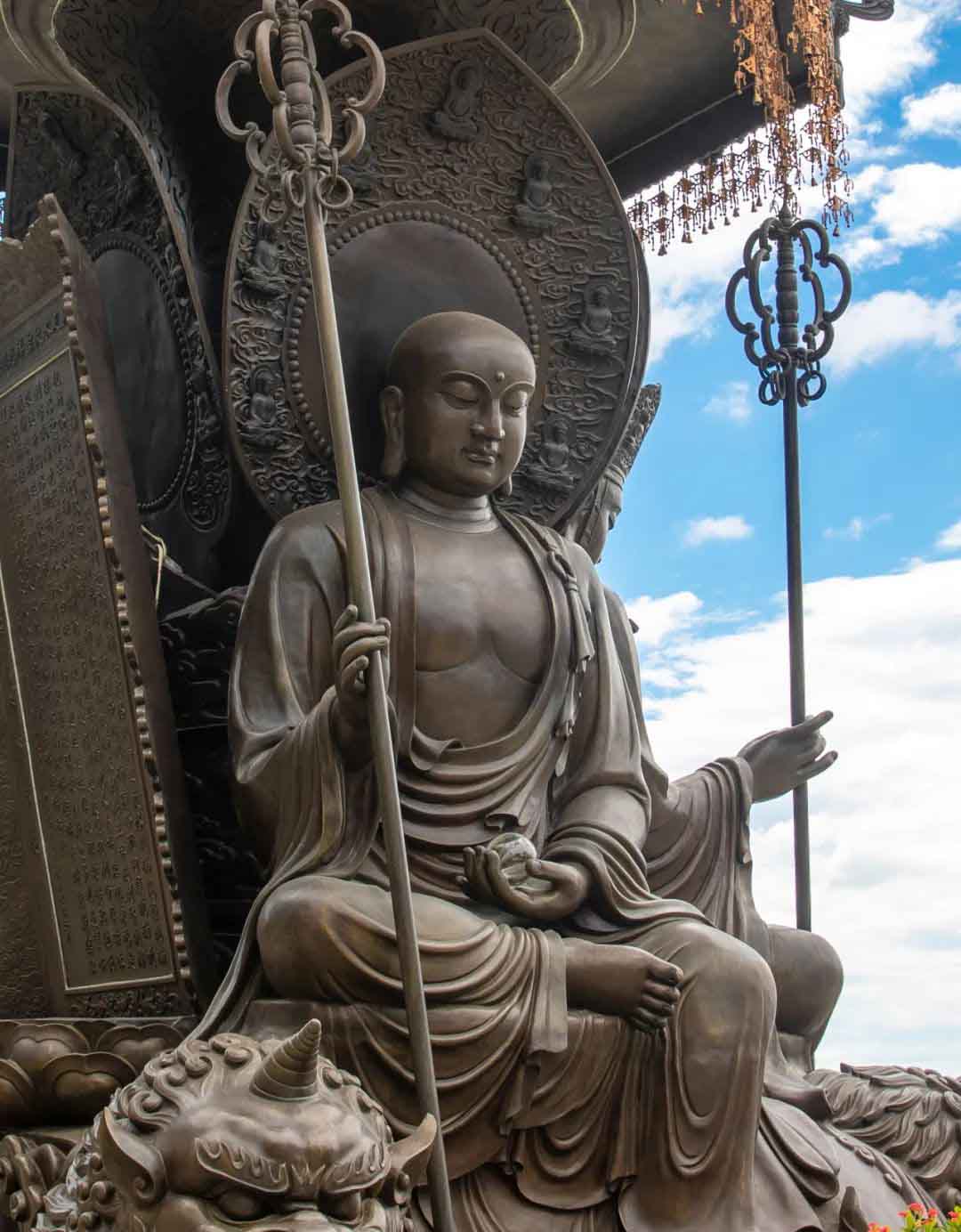Nestled in the serene peaks of Mount Jiuhua, a UNESCO World Heritage Site and one of China’s Four Sacred Buddhist Mountains, Jindizang Temple stands as a spiritual gem in Chizhou, Anhui Province. Dedicated to the venerated Golden Ksitigarbha Bodhisattva, this temple complex intertwines profound Buddhist heritage with breathtaking natural beauty, offering travelers a journey into devotion and tranquility.
Highlights of Jindizang Temple
The Legend of the Incorruptible Flesh

Jindizang Temple is famed for housing the 1,300-year-old mummified body of Monk Wuxia, a Ming Dynasty ascetic whose preserved remains are enshrined here. According to legend, Wuxia meditated in a cave for over 100 years, surviving on wild herbs, and his miraculously intact body became a symbol of spiritual attainment.
Architectural Marvels
Pagoda-Style Structure: The temple’s unique design blends traditional Chinese Buddhist architecture with mountain terrain. Its tiered halls cling to cliffs, creating a dramatic fusion of human craftsmanship and nature.
Ancient Sutra Platform: A quiet courtyard where monks once transcribed sacred texts, now a space for visitors to reflect or participate in meditation sessions.
Spiritual Significance
As part of Mount Jiuhua’s sacred landscape, Jindizang Temple is a pilgrimage site for devotees of Ksitigarbha Bodhisattva, who vowed to alleviate suffering in the afterlife. The temple’s incense-filled halls and chanting ceremonies provide a glimpse into living Buddhist traditions
Best Time to Visit
Spring (April–May) and Autumn (September–November): Mild temperatures (10–20°C) and clear skies enhance hiking and temple exploration. Spring also brings blooming rhododendrons, while autumn foliage paints the mountains golden.
Buddhist Festivals: Visit during Ksitigarbha Bodhisattva’s Birthday (late August/early September, lunar calendar) to witness grand rituals and lantern-lit processions.
Avoid Summer Crowds: June–August sees peak tourist influx and occasional rainstorms. Winter (December–February) offers serene snowy landscapes but requires warm clothing.
Travel Tips
Getting There
From Shanghai/Beijing: Take a high-speed train to Chizhou Station or Jiuhuashan Station, then transfer to the Mount Jiuhua Tourist Center for shuttle buses to the mountain entrance
Cable Car Option: For easier access, ride the cable car from Jiuhuashan Town to the temple area (ticket: ~RMB 100 round-trip)
Temple Etiquette
Dress modestly (cover shoulders/knees).
Avoid loud noises; photography may be restricted in prayer halls.
Light incense respectfully—three sticks symbolize blessings for heaven, earth, and ancestors.
Essentials to Pack
Footwear: Sturdy hiking shoes for steep paths.
Weather Gear: Light raincoat and layers for mountain microclimates.
Cash: Small bills for incense donations and local snacks




































